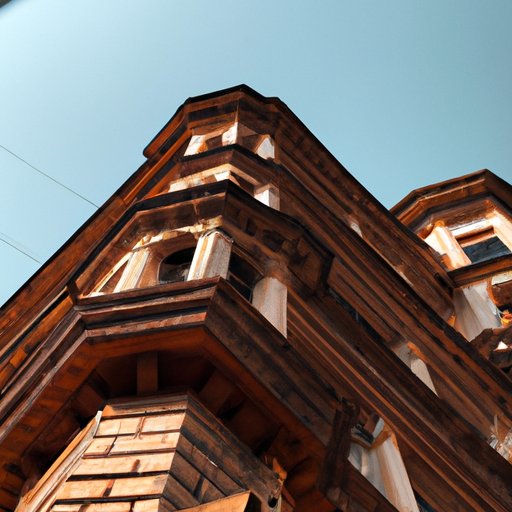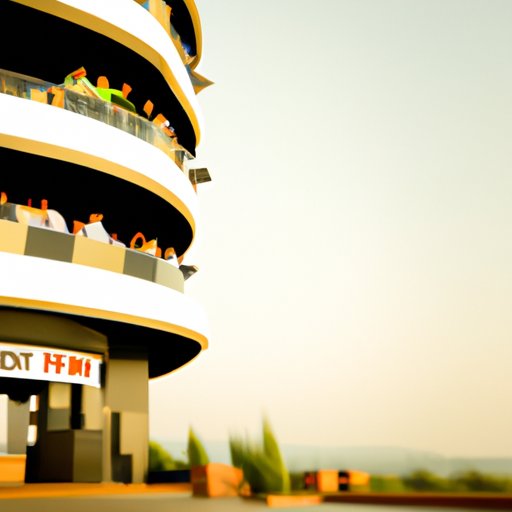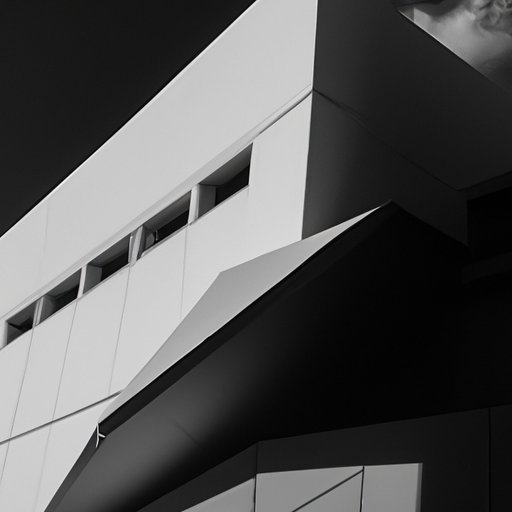An Overview of Architectural Photography
Architectural photography is a specialized form of photography that focuses on capturing the beauty of buildings and structures. It requires an understanding of both photography techniques and architecture in order to effectively capture the essence of a building or structure. In this article, we’ll explore the basics of architectural photography and provide tips and techniques for taking quality photos.
When it comes to defining architectural photography, it can be defined as the art of capturing the unique features of a building or structure through photography. The goal of architectural photography is to showcase the beauty and design of the structure in a way that captures the viewer’s attention. This type of photography typically involves the use of wide-angle lenses and long exposures, which allows the photographer to capture the grandeur of the structure.
When it comes to the types of shots used in architectural photography, there are several different options. These include exterior shots, which focus on the overall look of the building or structure; interior shots, which capture the details and design of the interior; and close-up shots, which highlight specific elements of the architecture.
The benefits of architectural photography are numerous. Not only does it allow photographers to capture the beauty of a structure, but it also provides an opportunity to highlight the skill and creativity of the architect or designer. Additionally, architectural photography can be used to help promote a building or structure, as well as to document its history and design.
A Guide to Taking Quality Architectural Photos
Taking quality architectural photographs requires more than just point-and-shoot skills. Here are some tips and techniques to help you get the best results when photographing buildings and structures.
Preparing for the Shoot
Before you begin shooting, it’s important to do your research and familiarize yourself with the building or structure you’ll be photographing. This includes researching the history of the building, its design, and any interesting features or stories associated with it. Additionally, you should consider the available lighting and the weather conditions, as these can have a major impact on the outcome of your photos.
Choosing the Right Equipment
In order to take quality architectural photos, you’ll need the right equipment. This includes a digital SLR camera with a wide-angle lens and a tripod. Additionally, you may want to invest in filters and special lighting equipment to help you capture the best possible images.
Finding the Best Angles and Perspectives
When it comes to architectural photography, angles and perspectives are everything. Finding the best angles and perspectives can make all the difference in the outcome of your photos. Try to find angles and perspectives that will emphasize the lines and shapes of the building or structure, as well as capture any interesting details or features. Additionally, don’t be afraid to experiment with different viewpoints and heights to get the shot you’re looking for.
Using Special Techniques for Architectural Photography
In addition to the standard techniques used for photography, there are also special techniques specifically designed for architectural photography. These include the use of HDR (High Dynamic Range) imaging, tilt-shift lenses, and panoramic shots. By utilizing these techniques, you can create unique and stunning photos that capture the beauty of a building or structure.

How to Capture the Beauty of Architecture Through Photography
Lighting is one of the most important elements in architectural photography. Without proper lighting, the details and features of a building or structure won’t be visible. Here are some tips and techniques for capturing the beauty of architecture through photography.
Understanding the Fundamentals of Light
In order to effectively capture the beauty of a building or structure, it’s important to understand the fundamentals of light. This includes understanding the direction, color, and intensity of the light. Additionally, you should consider the time of day and the position of the sun, as these factors can have a major impact on the quality of your photos.
Taking Advantage of Natural Lighting
Natural lighting can be a great way to capture the beauty of a building or structure. When using natural lighting, try to take advantage of shadows, reflections, and highlights. Additionally, you can use various techniques such as long exposures and HDR imaging to further enhance the effect.
Utilizing Artificial Lighting
If natural lighting isn’t available, artificial lighting can be used to create dramatic effects. This includes the use of flash, spotlights, and other forms of artificial lighting. Additionally, you can use various techniques such as light painting and reflection mapping to further emphasize the beauty of the architecture.
Enhancing the Images with Post-Processing Software
Once you’ve taken your photos, you can further enhance them using post-processing software. This includes adjusting the exposure, saturation, and contrast, as well as adding special effects such as vignettes and HDR effects. Additionally, you can use retouching tools to remove any unwanted elements from the image.

Tips and Techniques for Professional Architectural Photographers
For professional architectural photographers, there are several tips and techniques that can help you take quality photos. These include emphasizing lines and shapes, capturing movement, exploring various viewpoints, and experimenting with different lenses.
Emphasizing Lines and Shapes
When photographing a building or structure, it’s important to emphasize the lines and shapes. This can be done by choosing the right angles and perspectives, as well as utilizing techniques such as HDR imaging and light painting. Additionally, you can use the rule of thirds to draw attention to the lines and shapes of the architecture.
Capturing Movement
Movement can be a great way to add interest and drama to your photos. This can be done by using slow shutter speeds to capture the movement of people, cars, or other elements in the scene. Additionally, you can use techniques such as panning and zooming to further emphasize the movement.
Exploring Various Viewpoints
When photographing a building or structure, it’s important to explore various viewpoints. This includes getting up close and personal, as well as stepping back and capturing the entire structure. Additionally, you can use creative angles and perspectives to emphasize certain elements of the architecture.
Experimenting with Different Lenses
Different lenses can be used to create unique effects in your photos. For example, wide-angle lenses can be used to capture the grandeur of the architecture, while telephoto lenses can be used to capture details and textures. Additionally, you can use specialty lenses such as fisheye and tilt-shift lenses to create interesting and creative effects.

Using Light and Shadow to Enhance Your Architectural Photos
Light and shadow can be used to create dramatic effects in your architectural photos. Here are some tips and techniques for utilizing light and shadow to enhance your images.
Understanding the Importance of Shadows
Shadows can be a great way to add depth and dimension to your photos. When photographing a building or structure, try to take advantage of the shadows created by the sun, as well as any other natural or artificial light sources. Additionally, you can use techniques such as HDR imaging and light painting to further emphasize the shadows.
Creating Dramatic Effects with Light and Shadow
When using light and shadow to create dramatic effects, it’s important to consider the direction and intensity of the light. You can use the sun or other light sources to create interesting patterns and shapes, as well as emphasize certain elements of the architecture. Additionally, you can use techniques such as light painting and reflection mapping to further enhance the effect.
Utilizing Silhouettes
Silhouettes can be a great way to add drama and emotion to your photos. When using silhouettes, it’s important to consider the position of the sun and the direction of the light. Additionally, you can use techniques such as HDR imaging and light painting to further emphasize the silhouette.
Controlling the Light Exposure
When capturing the beauty of a building or structure, it’s important to control the light exposure. This includes adjusting the ISO, aperture, and shutter speed to achieve the desired effect. Additionally, you can use filters and special lighting equipment to further control the light exposure.
The Artistry of Architectural Photography
Architectural photography is not just about capturing the beauty of a building or structure, but also about showcasing the skill and creativity of the photographer. Here are some tips and techniques for creating beautiful and artistic photos.
Exploring Creative Composition
Composition plays an important role in architectural photography. When composing your photos, try to find creative angles and perspectives that will emphasize the lines and shapes of the architecture. Additionally, you can use the rule of thirds and other composition techniques to further enhance the composition.
Capturing Emotion
Architectural photography is not just about capturing the physical beauty of a building or structure, but also the emotions it evokes. When shooting, look for elements that evoke emotion and capture the atmosphere of the scene. Additionally, you can use techniques such as light painting and reflection mapping to further emphasize the emotion.
Finding Unique Angles
When photographing a building or structure, it’s important to find unique angles and perspectives. This includes getting up close and personal, as well as stepping back and capturing the entire structure. Additionally, you can use creative angles and perspectives to emphasize certain elements of the architecture.
Showcasing the Beauty of Architecture
The key to successful architectural photography is showcasing the beauty of the architecture. This includes emphasizing the lines and shapes of the structure, as well as highlighting any interesting details or features. Additionally, you can use techniques such as HDR imaging and light painting to further emphasize the beauty of the architecture.
(Note: Is this article not meeting your expectations? Do you have knowledge or insights to share? Unlock new opportunities and expand your reach by joining our authors team. Click Registration to join us and share your expertise with our readers.)
